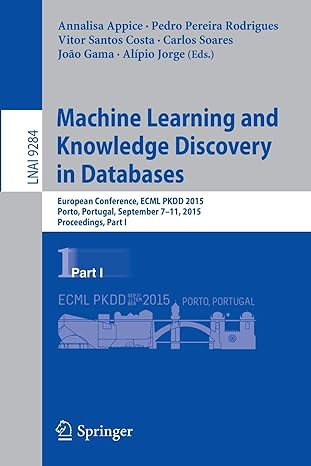Question
USING PYTHON: Given the lists list1 and list2, not necessarily of the same length, create a new list consisting of alternating elements of list1 and
USING PYTHON: Given the lists list1 and list2, not necessarily of the same length, create a new list consisting of alternating elements of list1 and list2 (that is, the first element of list1 followed by the first element of list2 , followed by the second element of list1, followed by the second element of list2, and so on. Once the end of either list is reached, the remaining elements of the longer list is added to the end of the new list. For example, if list1 contained [1, 2, 3] and list2 contained [4, 5, 6, 7, 8], then the new list should contain [1, 4, 2, 5, 3, 6, 7, 8]. Associate the new list with the variable list3.
I have the following solution but MyProgrammingLab is not accepting it:
list3 = [] for i in range(max(len(list1), len(list2))): if i
Step by Step Solution
There are 3 Steps involved in it
Step: 1

Get Instant Access to Expert-Tailored Solutions
See step-by-step solutions with expert insights and AI powered tools for academic success
Step: 2

Step: 3

Ace Your Homework with AI
Get the answers you need in no time with our AI-driven, step-by-step assistance
Get Started


